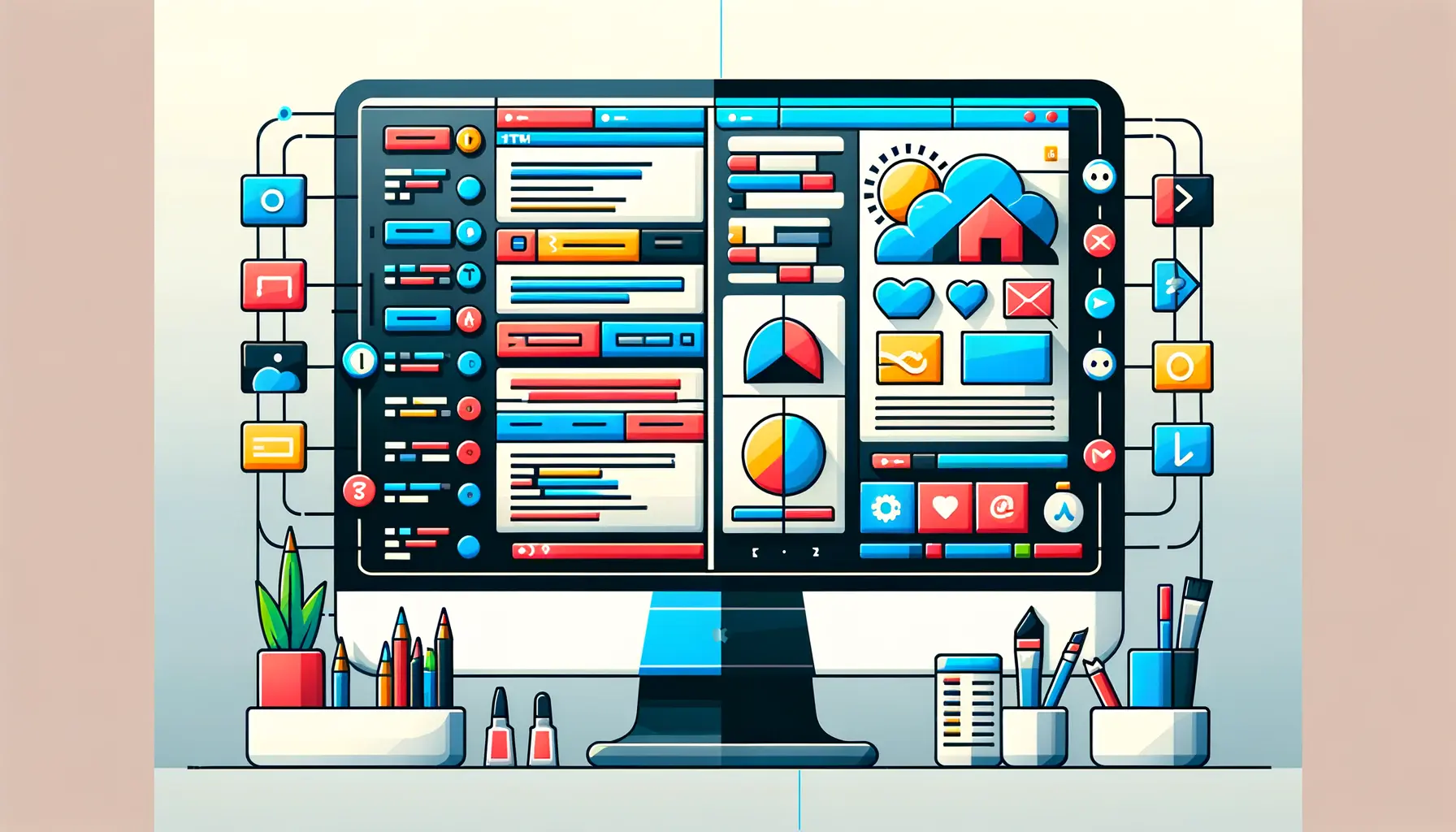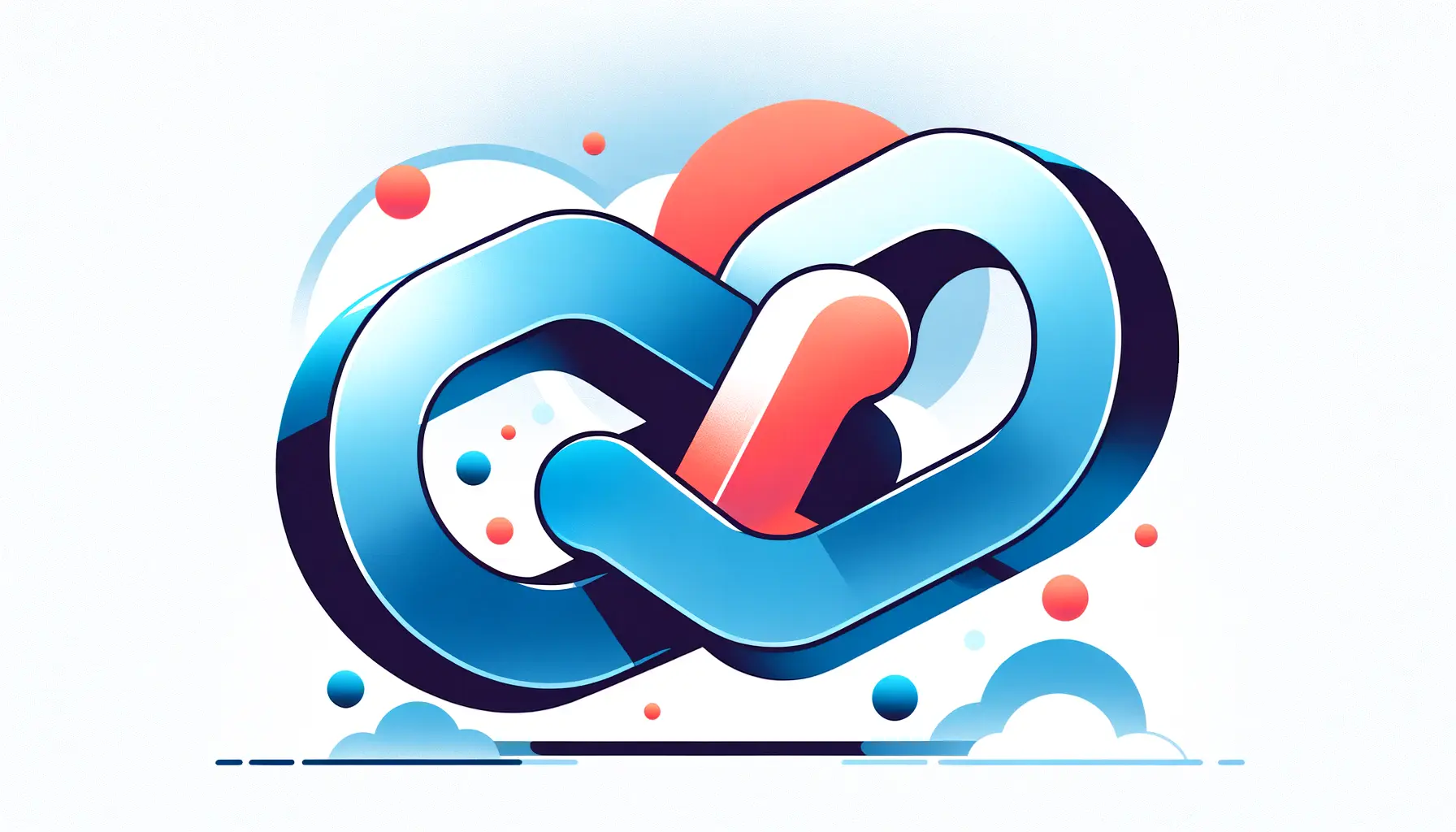The art of creating HTML emails stands as a cornerstone in the digital marketing realm, offering a blend of technical prowess and creative expression to engage audiences effectively.
As we delve into the intricacies of HTML email design, it’s essential to understand its significance in crafting campaigns that not only captivate but also convert.
This exploration is not just about the aesthetics of email design but also about understanding the strategic elements that make an email campaign successful.
Email marketing, when executed with precision, can be a powerful tool in the arsenal of digital marketers.
The main keyword, “email,” serves as the lifeline of such campaigns, ensuring that messages are not only delivered but also resonate with the intended audience.
The category of HTML plays a pivotal role in this, offering the flexibility and functionality needed to create emails that are both visually appealing and highly functional.
As we embark on this journey, our focus will be on leveraging the potential of HTML to design emails that stand out in the crowded inboxes of today.
- The Foundation of HTML Email Design
- Visual Elements and Branding in Email Design
- Content Strategy and Copywriting for Emails
- Email Campaign Planning and Execution
- Integrating Email with Other Marketing Channels
- Advanced Techniques in HTML Email Design
- Measuring Success and Optimizing Email Campaigns
- Maximizing Impact with HTML Email Design
- HTML Email Design FAQs
The Foundation of HTML Email Design
Understanding the basics of HTML email design is crucial for anyone looking to master the craft.
At its core, HTML allows for the creation of structured, interactive emails that go beyond plain text to include colors, fonts, layouts, and even multimedia elements.
This foundation is what enables designers and marketers to create emails that are not just informative but also engaging.
The process begins with a clear grasp of HTML tags and CSS styling, which are the building blocks of any email design.
These elements work together to create a visual hierarchy, guiding the recipient’s eye through the content in a way that is both logical and appealing.
The goal is to ensure that the most important information catches the eye first, followed by supporting details and calls to action.
Best Practices in Layout and Composition
When it comes to layout and composition, there are several best practices that can significantly enhance the effectiveness of your HTML emails.
A well-structured email should have a maximum width of 600-800 pixels to ensure optimal readability across devices.
This constraint is not just about aesthetics but also about practicality, as most email clients and mobile devices display emails within this range comfortably.
Another key aspect of layout is the use of whitespace, which helps in separating different sections of the email, making it easier for recipients to digest the information.
Strategic use of images and multimedia can also add value, but it’s important to balance these elements to avoid overwhelming the reader or causing long load times.
- Responsive Design: Ensuring your email design is responsive is non-negotiable. With the increasing use of mobile devices to check emails, your design must adapt seamlessly across different screen sizes.
- Clear Call-to-Action (CTA): Your email should have a clear and compelling CTA, guiding recipients on what to do next. Whether it’s visiting a website, signing up for a webinar, or making a purchase, the CTA should be prominent and persuasive.
Incorporating interactive elements like buttons or links within your HTML email can significantly increase engagement rates, making it easier for recipients to take the desired action.
As we continue to explore the realm of HTML email design, it’s clear that the foundation lies in understanding the technical aspects of HTML and CSS, as well as the creative and strategic application of these tools.
By adhering to best practices in layout and composition, and focusing on creating responsive, engaging emails, marketers can effectively craft campaigns that resonate with their audience and drive results.
Visual Elements and Branding in Email Design
The visual aspect of HTML email design plays a pivotal role in capturing the attention of recipients and conveying the brand’s message effectively.
Incorporating brand elements such as logos, color schemes, and fonts ensures consistency across all marketing channels, reinforcing brand recognition and trust.
The strategic use of visuals not only enhances the aesthetic appeal of an email but also supports the overall messaging and objectives of the campaign.
Choosing the right color palette and typography can significantly impact the readability and emotional response of the audience.
Colors can evoke specific feelings and actions, making it crucial to select hues that align with the message you wish to convey.
Similarly, typography should enhance the email’s readability while also reflecting the brand’s personality.
The integration of these visual elements must be done thoughtfully to create a cohesive and engaging email experience.
Optimizing Images for Email Campaigns
Images are a powerful tool in HTML email design, capable of conveying complex messages quickly and engagingly.
However, their optimization is key to ensuring that emails load quickly and are displayed correctly across different email clients and devices.
This includes compressing images to reduce file size without compromising quality and using appropriate file formats like JPEG for photographs and PNG for graphics with transparent backgrounds.
Furthermore, the use of alt text with images is essential for accessibility and for instances where images do not load in the recipient’s email client.
Alt text ensures that the message is conveyed even without the visual element, making it an important consideration in the design process.
- Personalization Through Visuals: Tailoring the visual elements of an email to match the preferences or past behavior of recipients can greatly enhance personalization and relevance. This could mean customizing imagery based on the recipient’s interests or previous interactions with the brand.
- Interactive Elements: Incorporating interactive elements such as hover effects, animated GIFs, or even embedded videos can make emails more engaging and memorable. These elements should be used sparingly and strategically to complement the message and encourage interaction.
Considering the psychology of color and typography can provide valuable insights into how visual elements influence recipient engagement and action.
In conclusion, the visual elements and branding within HTML email design are crucial for creating a strong and positive impression on recipients.
By carefully selecting and optimizing these elements, marketers can craft emails that not only look great but also align closely with the brand’s identity and campaign goals.
The ultimate aim is to create an immersive and cohesive brand experience that resonates with the audience and drives engagement.
Content Strategy and Copywriting for Emails
The content of an HTML email is as crucial as its design.
A well-crafted message that resonates with the audience can significantly increase engagement and conversion rates.
The strategy behind email content involves understanding the audience’s needs and preferences to deliver value through every message.
This requires a delicate balance of informative, persuasive, and entertaining content that aligns with the overall goals of the email campaign.
Effective copywriting in email marketing is about more than just selling a product or service; it’s about telling a story that connects with the recipient on a personal level.
This involves using a tone that matches the brand’s voice, creating compelling subject lines that encourage opens, and crafting a clear, concise message that drives action.
The use of personalization and segmentation further enhances the relevance of the content, making each recipient feel like the email was crafted specifically for them.
Creating Engaging and Relevant Content
To keep the audience engaged, the content of an HTML email must be relevant and valuable.
This could include tips, insights, updates, or exclusive offers that the recipient finds useful or interesting.
Employing storytelling techniques can also make the content more relatable and memorable, thereby increasing the likelihood of engagement and action.
Moreover, the structure of the email content plays a significant role in its effectiveness.
Breaking down the content into easily digestible sections with clear headings and bullet points can improve readability and ensure that the key messages stand out.
Including a clear call-to-action (CTA) that guides the recipient on what to do next is essential for converting engagement into tangible outcomes.
- Subject Line Mastery: The subject line is the first impression of your email. Crafting a subject line that is both intriguing and informative can significantly increase open rates. It should be concise, clear, and reflective of the email’s content.
- Personalization and Segmentation: Tailoring the email content to the recipient’s interests, behaviors, and past interactions with the brand can dramatically improve the effectiveness of the campaign. This level of personalization makes the content more relevant and engaging to the individual recipient.
A/B testing different elements of your email content, from subject lines to CTAs, can provide valuable insights into what resonates best with your audience, allowing for continuous optimization of your email campaigns.
In summary, the content strategy and copywriting for HTML emails are fundamental to the success of an email marketing campaign.
By focusing on delivering value through engaging, relevant, and personalized content, marketers can build meaningful connections with their audience, encouraging loyalty and driving conversions.
The key is to blend creativity with strategic thinking, ensuring that every email sent not only looks great but also aligns perfectly with the campaign’s objectives and the recipient’s expectations.
Email Campaign Planning and Execution
Planning and executing an HTML email campaign requires meticulous strategy and attention to detail.
It begins with setting clear objectives, such as increasing brand awareness, driving sales, or nurturing leads.
These goals inform the campaign’s design, content, and target audience, ensuring that every element aligns with the desired outcome.
A successful campaign also depends on understanding the audience’s preferences and behaviors, enabling marketers to tailor their approach for maximum engagement.
Execution involves more than just sending emails.
It encompasses the selection of the right tools and platforms for email creation, testing, and distribution.
This includes choosing an email service provider (ESP) that offers the necessary features for your campaign, such as automation, segmentation, and analytics.
The use of automation can significantly enhance the efficiency and effectiveness of email campaigns, allowing for personalized and timely communication with the audience.
Segmentation and Personalization
Segmentation divides the email list into smaller, more targeted groups based on specific criteria, such as demographics, purchase history, or engagement level.
This enables marketers to tailor their messaging to better meet the needs and interests of each segment, increasing the relevance and effectiveness of the campaign.
Personalization goes a step further by customizing the email content for individual recipients, making the message feel more personal and engaging.
Effective segmentation and personalization rely on robust data collection and analysis.
Marketers must gather and utilize data on their audience’s preferences, behaviors, and interactions with the brand.
This data informs the segmentation strategy and personalization tactics, ensuring that each email resonates with the recipient and drives the desired action.
- Testing and Optimization: Before launching a campaign, it’s crucial to test different elements of the email, such as the design, content, and subject lines. A/B testing can reveal what works best with your audience, allowing for continuous improvement and optimization of the campaign.
- Analytics and Measurement: Monitoring the performance of an email campaign is essential for understanding its effectiveness. Key metrics such as open rates, click-through rates, conversion rates, and ROI provide valuable insights that can inform future campaigns. This data-driven approach ensures that each campaign is more successful than the last.
Consistent monitoring and analysis of campaign performance allow for agile adjustments and optimizations, ensuring that the email marketing strategy remains aligned with changing audience preferences and market trends.
In conclusion, the planning and execution of an HTML email campaign are critical components of its success.
By setting clear objectives, utilizing segmentation and personalization, testing and optimizing, and closely monitoring performance, marketers can create effective and engaging email campaigns that achieve their goals.
The key is to remain flexible and responsive to the data, continuously refining the strategy to maximize engagement and conversions.
Integrating Email with Other Marketing Channels
Email marketing does not exist in a vacuum; it’s most effective when integrated with other marketing channels.
This holistic approach ensures a consistent and cohesive brand experience across all touchpoints, enhancing the overall impact of the marketing strategy.
By aligning email campaigns with social media, content marketing, SEO, and offline efforts, marketers can create a synergistic effect that amplifies the reach and effectiveness of their campaigns.
Integration involves more than just cross-promotion; it’s about creating a seamless journey for the audience.
For instance, social media can drive subscribers to your email list, while email campaigns can encourage further engagement on social platforms.
Similarly, content marketing efforts, such as blog posts or whitepapers, can be promoted through email, driving traffic back to the website and improving SEO rankings.
Leveraging Data Across Channels
The key to successful integration is the strategic use of data.
By analyzing data from email campaigns alongside insights from other channels, marketers can gain a comprehensive understanding of their audience’s preferences and behaviors.
This allows for more targeted and personalized marketing efforts across all channels, increasing the relevance and effectiveness of the communications.
Data from email interactions can inform content creation, social media strategies, and even offline initiatives, ensuring that all marketing efforts are aligned with the audience’s needs and interests.
Conversely, insights from social media and website analytics can enhance email segmentation and personalization, creating a feedback loop that continuously improves the marketing strategy.
- Consistent Branding: Ensuring consistent use of logos, color schemes, and messaging across email and other marketing channels reinforces brand identity and builds trust with the audience.
- Coordinated Campaigns: Launching coordinated campaigns across email, social media, and other channels can create a more impactful and immersive experience for the audience. This could include synchronized product launches, promotions, or events.
Integrating email marketing with other channels not only enhances the effectiveness of each individual campaign but also contributes to a stronger, more unified brand presence.
In summary, integrating email with other marketing channels is essential for creating a comprehensive and effective marketing strategy.
By leveraging data across channels, maintaining consistent branding, and coordinating campaigns, marketers can ensure a seamless and engaging experience for their audience.
This integrated approach not only maximizes the impact of each marketing effort but also fosters a deeper connection between the brand and its audience, driving long-term loyalty and growth.
Advanced Techniques in HTML Email Design
As the digital landscape evolves, so do the techniques and technologies available for HTML email design.
Advanced techniques can set your email campaigns apart, making them more interactive, engaging, and effective.
These include the use of CSS animations, interactive elements like accordions or tabs, and even incorporating AI-driven content for a highly personalized experience.
Embracing these innovations can significantly enhance the recipient’s interaction with your emails, leading to higher engagement and conversion rates.
However, implementing advanced design features requires a deep understanding of both the possibilities and limitations within email clients.
Compatibility issues can arise, making it essential to test emails across a variety of platforms to ensure a consistent experience for all recipients.
This level of sophistication in email design not only captivates your audience but also demonstrates your brand’s commitment to delivering high-quality, innovative communications.
Personalization and AI
The use of artificial intelligence (AI) in email marketing is transforming how brands communicate with their audience.
AI can analyze vast amounts of data to predict the content, offers, and products most relevant to each recipient, allowing for unprecedented levels of personalization.
This can extend to dynamic content that changes based on the recipient’s past behavior, location, or even the time they open the email.
Such personalized experiences make each email feel tailor-made, significantly boosting engagement and loyalty.
Moreover, AI can optimize send times, subject lines, and email content, continuously learning from the audience’s interactions to improve future campaigns.
This adaptive approach ensures that your email marketing efforts remain highly effective over time, constantly evolving to meet the needs and preferences of your audience.
- Interactive Elements: Incorporating interactive elements like sliders, polls, or quizzes can make emails more engaging and fun. These features encourage active participation from the recipient, making the email experience more memorable.
- Accessibility and Inclusivity: Advanced email design also means ensuring that emails are accessible to everyone, including people with disabilities. This includes using semantic HTML, alternative text for images, and designing for screen readers, ensuring that all recipients can fully engage with your emails.
Assuming all email clients support the latest web technologies can lead to poor user experiences. Always test your emails across different clients and devices to ensure compatibility.
In conclusion, leveraging advanced techniques in HTML email design can greatly enhance the effectiveness of your campaigns.
From incorporating interactive elements to utilizing AI for personalization, these strategies can create more engaging and personalized email experiences.
However, it’s crucial to balance innovation with accessibility and compatibility, ensuring that all recipients enjoy a high-quality experience.
By staying at the forefront of email design technology, marketers can continue to captivate and engage their audience in new and exciting ways.
Measuring Success and Optimizing Email Campaigns
Understanding the impact of your HTML email campaigns is crucial for continuous improvement and success.
Measuring success goes beyond just looking at open and click-through rates; it involves a comprehensive analysis of various metrics to gauge the overall performance and ROI of your email marketing efforts.
This includes conversion rates, bounce rates, list growth rate, and engagement over time.
By closely monitoring these metrics, marketers can identify what works, what doesn’t, and where there’s room for optimization.
Optimization of email campaigns is an ongoing process.
It involves tweaking design elements, refining the content strategy, and adjusting the segmentation and personalization tactics based on data-driven insights.
Continuous testing and analysis are key to understanding the preferences and behaviors of your audience, allowing for the fine-tuning of campaigns to maximize engagement and conversions.
A/B Testing and Analytics
A/B testing is a powerful tool in the optimization arsenal, allowing marketers to compare different versions of an email to determine which performs better on specific metrics.
This can include variations in subject lines, email content, design, and calls to action.
By systematically testing these elements, marketers can make data-backed decisions that enhance the effectiveness of their campaigns.
Analytics play a crucial role in measuring success and guiding optimization efforts.
Most email service providers offer comprehensive analytics features, providing insights into how recipients interact with your emails.
This data is invaluable for understanding the user journey, from opening an email to taking a desired action, such as making a purchase or signing up for a webinar.
Leveraging these insights can help refine targeting strategies, improve content relevance, and increase overall campaign performance.
- Engagement Over Time: Monitoring how engagement changes over time can provide insights into the long-term effectiveness of your email marketing strategy. This includes tracking how often recipients open your emails, click on links, and convert over multiple campaigns.
- Segmentation Effectiveness: Evaluating the performance of different segments can help identify the most responsive audiences. This information can be used to further refine segmentation strategies, ensuring that emails are as relevant and engaging as possible.
Regularly updating your email list and removing inactive subscribers can improve engagement metrics and ensure your campaigns are reaching an interested and engaged audience.
In summary, measuring success and optimizing email campaigns are critical for maximizing the ROI of your email marketing efforts.
By leveraging A/B testing, analytics, and continuous improvement strategies, marketers can enhance the relevance, engagement, and effectiveness of their campaigns.
This data-driven approach ensures that email marketing remains a powerful tool for connecting with your audience and achieving your business objectives.
Maximizing Impact with HTML Email Design
In the digital age, where email continues to be a pivotal channel for communication, mastering HTML email design is more than a necessity—it’s an art that combines technical skill with creative vision.
The journey through the intricacies of crafting effective email campaigns reveals a landscape where every detail counts, from the foundational aspects of coding to the nuanced strategies of content and design optimization.
The main keyword, “email,” is not just a medium of communication; it’s a powerful tool for creating meaningful connections and driving tangible results.
The Essence of Strategic Email Design
At the heart of impactful HTML email design lies the understanding that every element serves a purpose.
From the initial layout to the final call-to-action, each component must be meticulously planned and executed to guide the recipient through a seamless and engaging experience.
This strategic approach extends beyond aesthetics, delving into the psychology of color, the clarity of content, and the precision of personalization, all aimed at enhancing the effectiveness of each email campaign.
Embracing Innovation and Optimization
The digital landscape is ever-evolving, and with it, the techniques and technologies available for HTML email design.
Embracing innovation—be it through advanced design features, integration with AI, or the use of interactive elements—can set your campaigns apart, making them not only more engaging but also more personalized.
However, innovation must be balanced with optimization.
Regular testing, analysis, and refinement are crucial for ensuring that your emails continue to resonate with your audience and achieve your marketing objectives.
Key Takeaways for Effective Email Campaigns
- Understanding your audience and tailoring your message to meet their needs is foundational to successful email marketing.
- Design and content should work hand in hand to create an engaging and cohesive experience that reflects your brand’s identity and values.
- Segmentation and personalization are key strategies for increasing the relevance and effectiveness of your campaigns.
- Continuous testing and optimization, guided by data-driven insights, are essential for improving engagement and conversions over time.
- Integrating email with other marketing channels enhances the overall impact of your marketing strategy, creating a unified brand experience.
In conclusion, crafting effective HTML email campaigns is a multifaceted endeavor that demands a blend of creativity, technical expertise, and strategic thinking.
By focusing on the user experience, embracing innovation, and continuously optimizing based on data-driven insights, marketers can leverage email to its fullest potential.
The journey from crafting an email to achieving a desired action is complex, yet deeply rewarding, offering endless opportunities to connect with your audience in meaningful ways.
As we look to the future, the role of email in digital marketing remains undiminished, a testament to its enduring power to engage, inform, and inspire.
Quality web design is key for a great website! Check out our service page to partner with an expert web design agency.
HTML Email Design FAQs
Explore common questions about crafting effective HTML email campaigns, incorporating insights and best practices.
To ensure optimal readability across devices, HTML emails should be 600-800 pixels in width.
Use fluid layouts, scalable images, and media queries to ensure your emails adapt seamlessly to different screen sizes.
Yes, but design assuming images may be blocked by email clients. Use alt text for descriptions and keep your layout functional without them.
Choose web-safe fonts, maintain a legible font size, and use hierarchy for headings and body text to enhance readability.
Incorporate interactive elements like buttons and links, and use personalization to make content more relevant to the recipient.
Layout, typography, color, imagery, and interactivity are crucial for creating visually appealing and functional emails.
Use semantic HTML, provide alt text for images, and ensure high contrast for text to make your emails accessible to everyone.
Yes, AI can analyze data to predict content relevance, optimize send times, and personalize emails for higher engagement.











